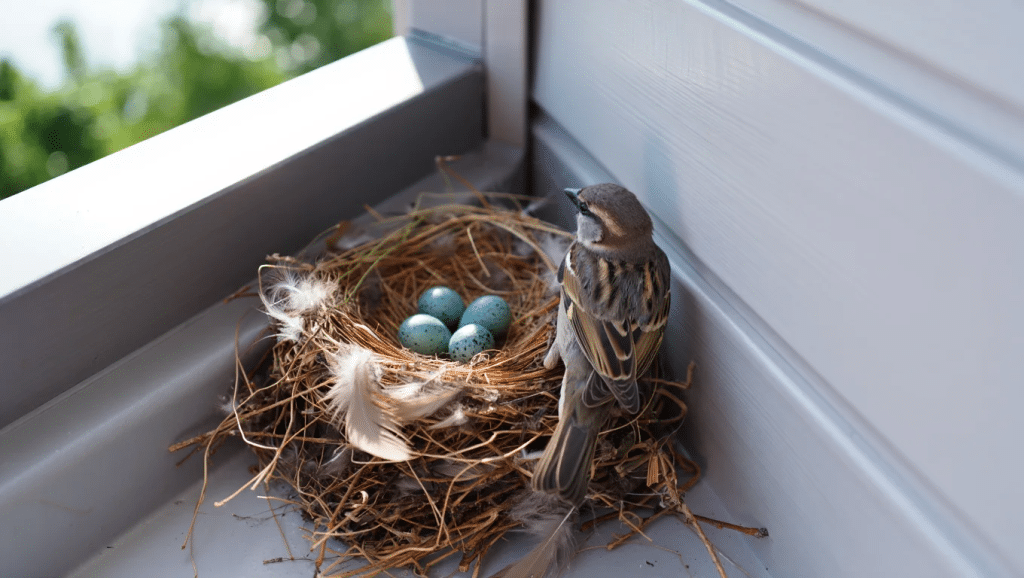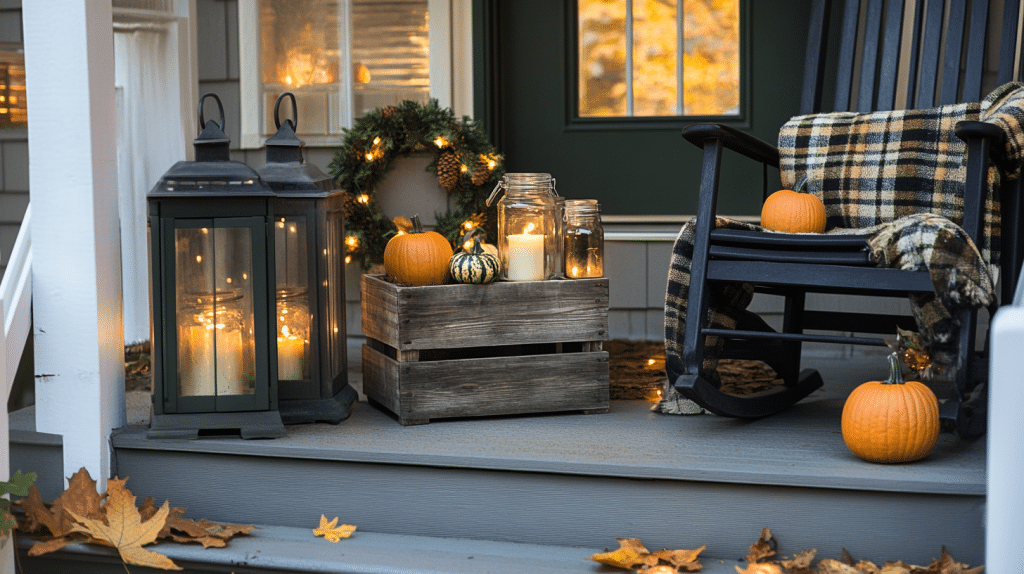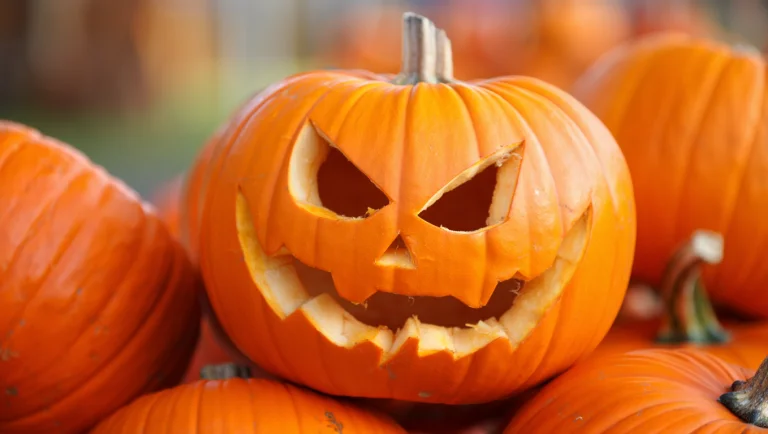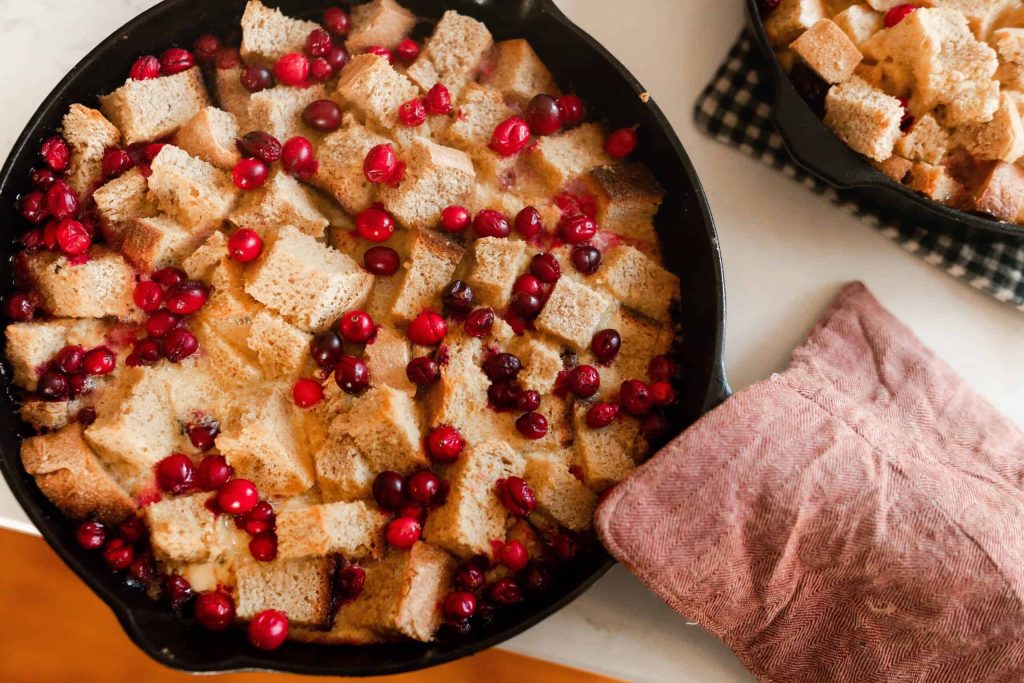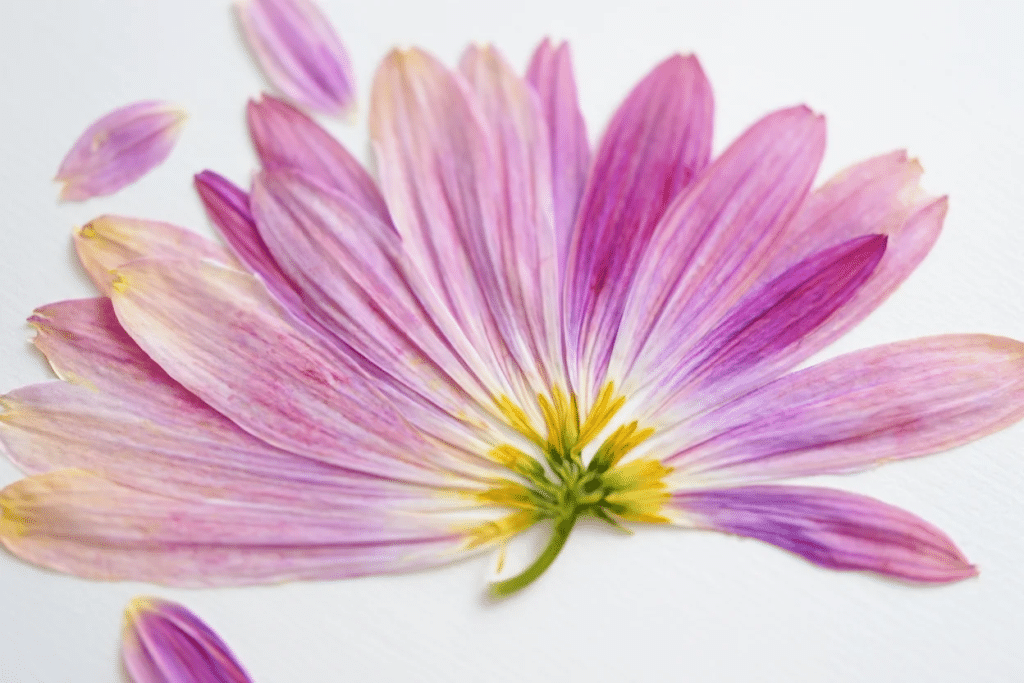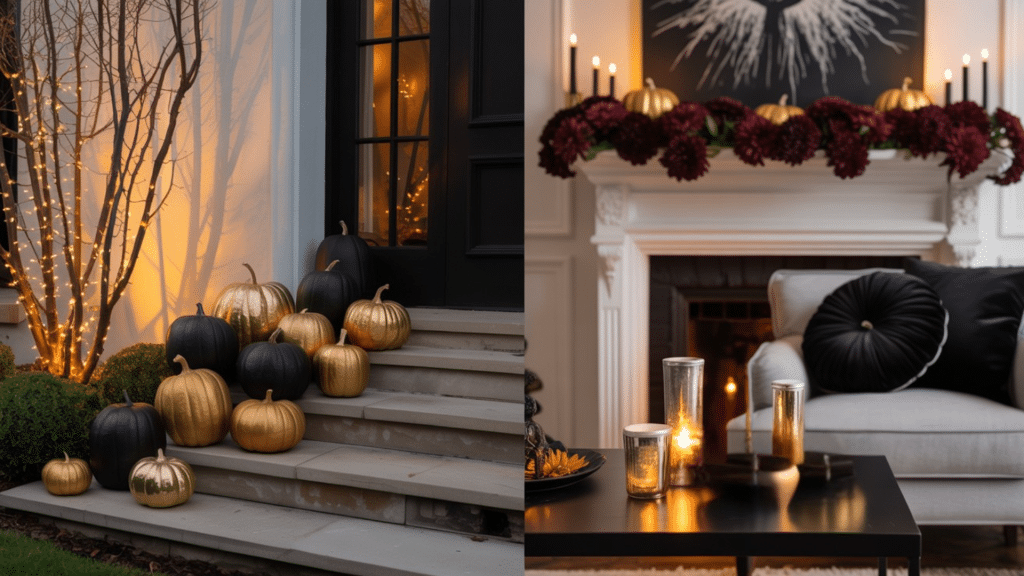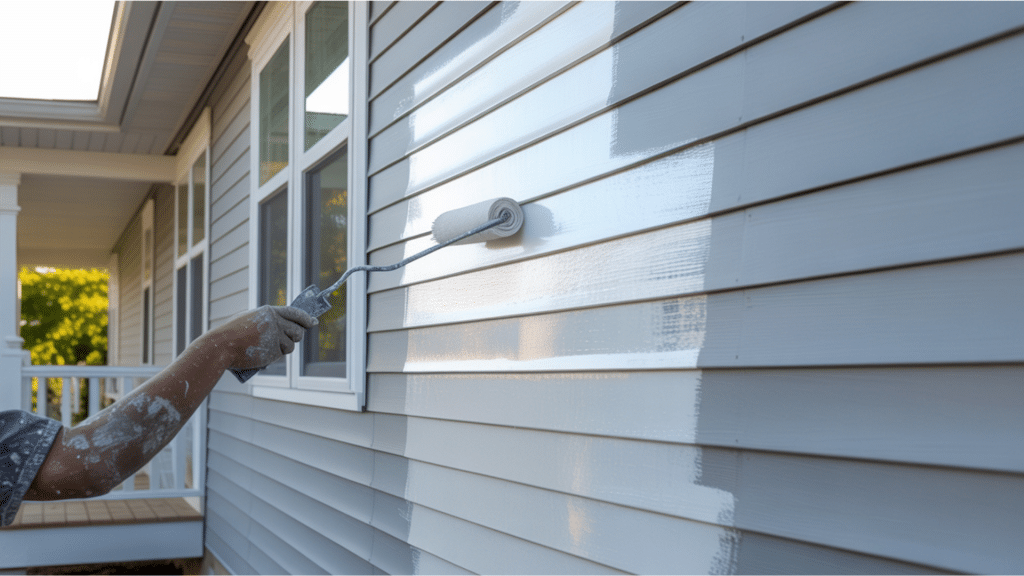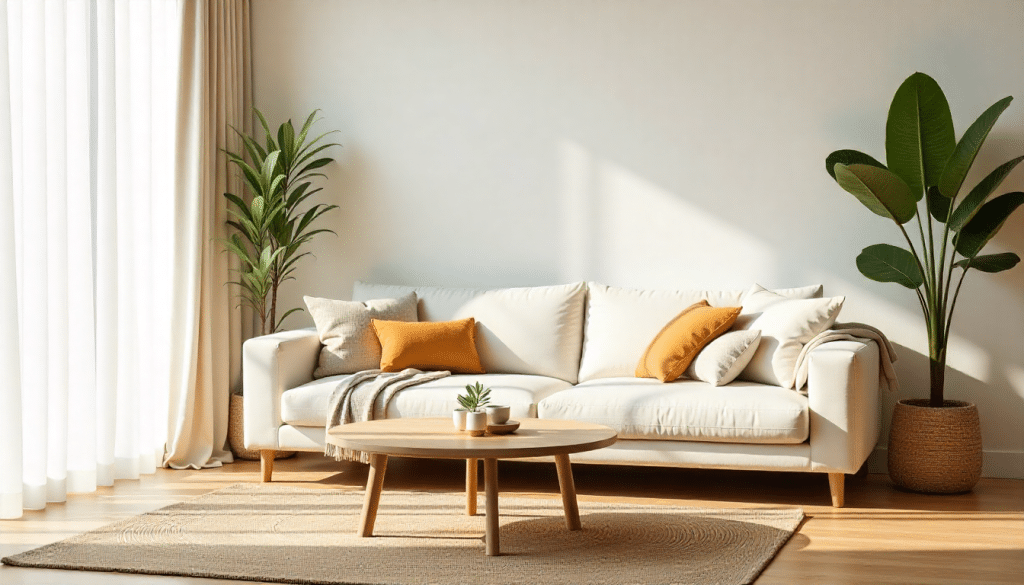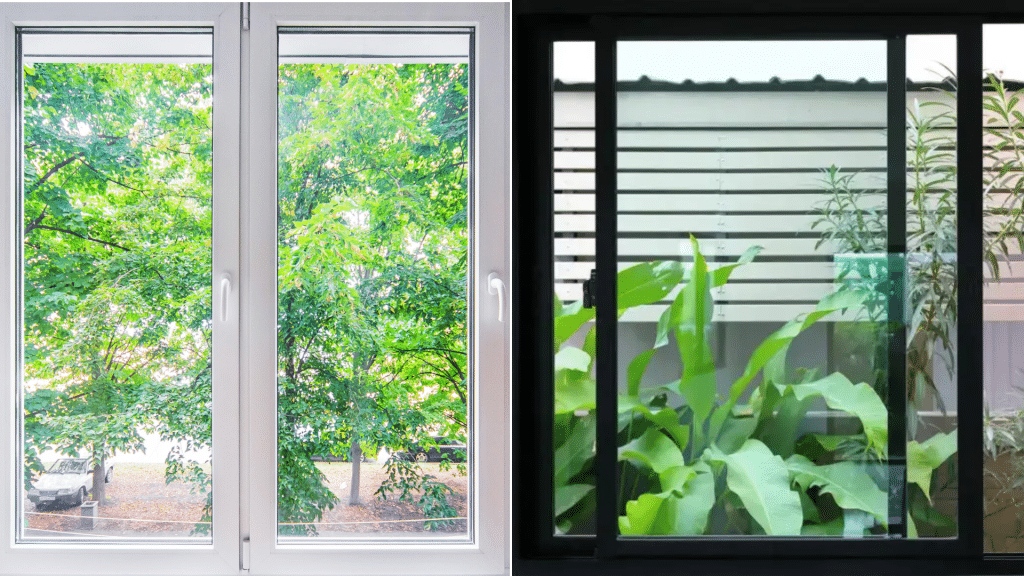Birdsong in the morning? Lovely. A bird nesting in your eaves or porch light? Not so much.
While birds are a joy to watch, when they decide to set up camp around your home, things can get messy fast. It’s not just dirty.
Nests can block ventilation, attract insects, and create safety hazards for both your home and the birds.
In this blog post, we’ll walk you through simple, humane ways to stop birds from nesting where they shouldn’t while still giving them a safe spot to call home.
Let’s find the balance between nature and your space.
Why is it Important to Stop Birds from Nesting?
Managing bird nesting around your home is essential not just for cleanliness, but also to protect property, health, and local ecosystems, while minimizing noise and preventing structural damage.
- Protecting Property: Bird droppings can cause long-term damage to buildings, vehicles, and outdoor furniture. The acidic nature of bird waste can erode surfaces, leading to costly repairs and cleaning. Their nesting in vents, chimneys, or eaves can cause blockages or fires, too, if left unchecked.
- Preventing Health Risks: Bird droppings can carry harmful bacteria, fungi, and parasites, posing potential health risks to humans and pets. Managing bird nesting helps reduce the chance of exposure to these contaminants.
- Reducing Noise Pollution: Birds, especially in large numbers, can create significant noise disturbances with their constant chirping and calling, which may be disruptive to daily life, particularly in quiet neighborhoods.
- Preserving Ecosystems: Overcrowding by non-native bird species, such as starlings, can displace native wildlife, disrupting the local ecosystem. Managing nesting sites ensures a balanced environment.
How to Stop Birds from Nesting in Your Space
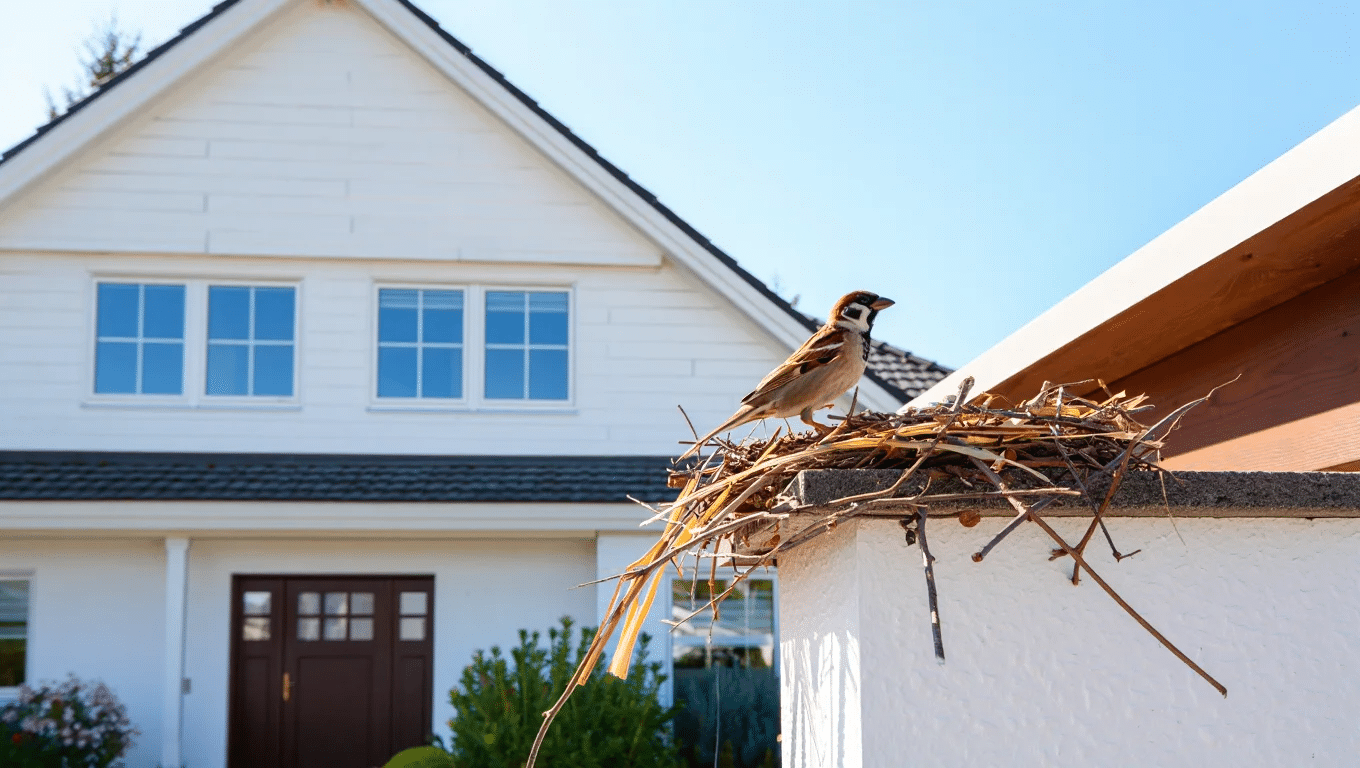
Birds add beauty to our yards, but their nesting can create problems when they choose vents, ledges, or rooftops.
Bird netting covers larger areas effectively, while spikes handle specific spots like ledges. Seal entry points such as vents and chimneys with screens or sealant to keep birds out and improve your home’s insulation.
Use visual and sound deterrents like reflective tape, old CDs, or plastic owl decoys. Move these items around occasionally so birds don’t get used to them.
Spray non-toxic mixtures made from chili or garlic in areas where birds gather. Essential oils like peppermint or citronella work too – use them in diffusers or soak cotton balls and place them strategically.
Start your deterrent efforts before nesting season begins, usually in late winter or early spring. This prevents birds from settling in the first place. Learn your local nesting cycles to time your prevention efforts for the best results.
Eco-Friendly and Humane Alternatives
There are several eco-friendly and humane ways to discourage birds from nesting in unwanted spots, while still supporting healthy bird populations and maintaining a balanced environment around your home.
1. Ultrasonic Devices: Emit high-frequency sounds that are unpleasant to birds but inaudible to humans, effectively discouraging nesting in unwanted areas.
2. Sound-Emitting Devices: Use recordings of predator calls or distress signals to make birds believe the area is unsafe, encouraging them to find alternative nesting sites.
3. Attracting Natural Predators: Install perches or nesting platforms for hawks or falcons to encourage these natural predators to deter smaller birds from nesting nearby.
4. Fostering Healthy Bird Habitats Elsewhere: Create designated bird-friendly areas away from your home with native plants and water sources, guiding birds to safer locations.
5. Install birdhouses at a distance from your house to provide a safe, alternative nesting space for birds, keeping them away from your eaves, vents, or other unwanted spots.
Common Birds Nesting in Your House
Different bird species are attracted to urban and suburban areas for food, shelter, and nesting opportunities.
While they add beauty to the environment, their presence can cause damage or disruption.
Pigeons (Rock Doves)
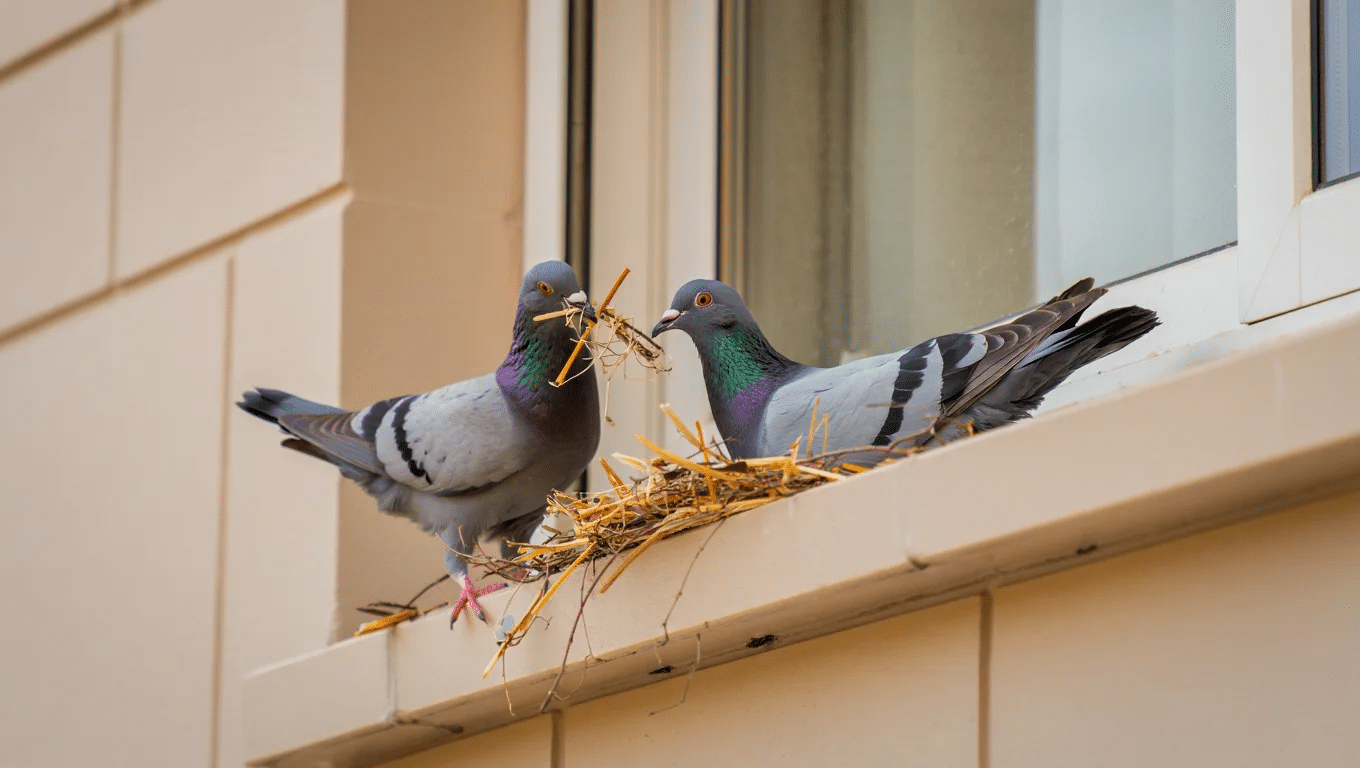
Why They’re Attracted:
Pigeons love urban areas because they offer plenty of food (like scraps) and safe spots to nest, such as rooftops and vents. These places are sheltered from predators.
Signs of Disruption:
- Droppings on ledges or windowsills.
- Nests in unwanted spots like vents or exhaust fans.
- Blocked gutters from nesting material.
House Sparrows
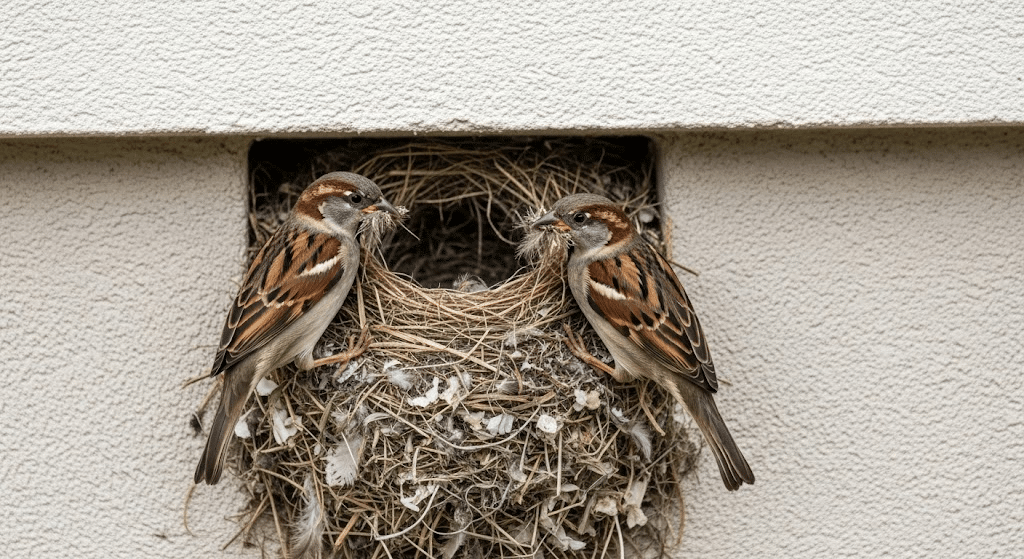
Why They’re Attracted:
House sparrows are drawn to cities and suburbs because they can easily find food and cozy spots to nest, like chimneys or wall cracks.
Signs of Disruption:
- Nests block chimneys or vents.
- Droppings or nesting debris around the house.
- Noisy sparrows hanging around.
Starlings (European Starlings)
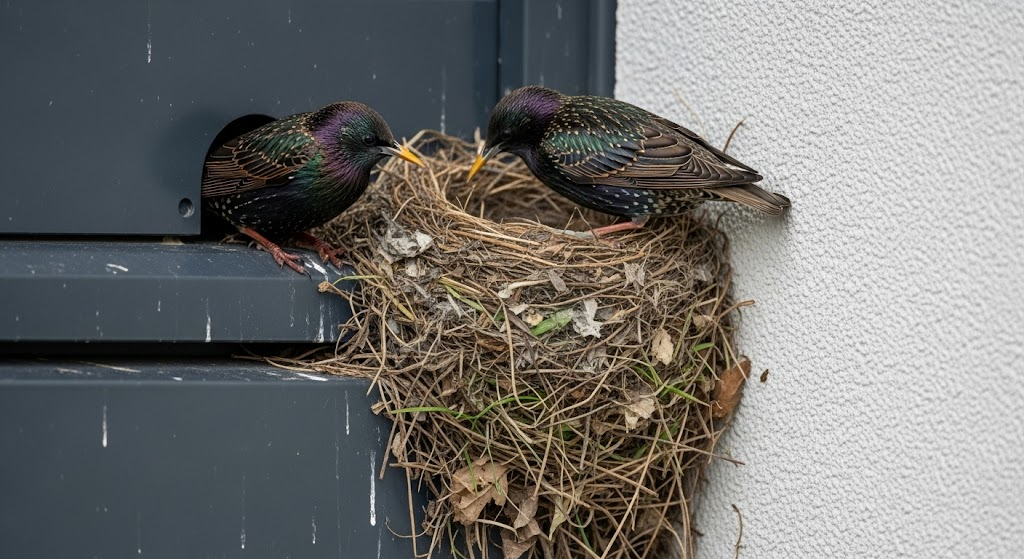
Why They’re Attracted:
Starlings like human spaces because of the food and nesting opportunities. They’ll take any hole or crevice and often form large, noisy flocks.
Signs of Disruption:
- Large, noisy flocks at dawn or dusk.
- Nests in hard-to-reach spots.
- Droppings or damage from nesting.
Crows (American Crows, Common Ravens)
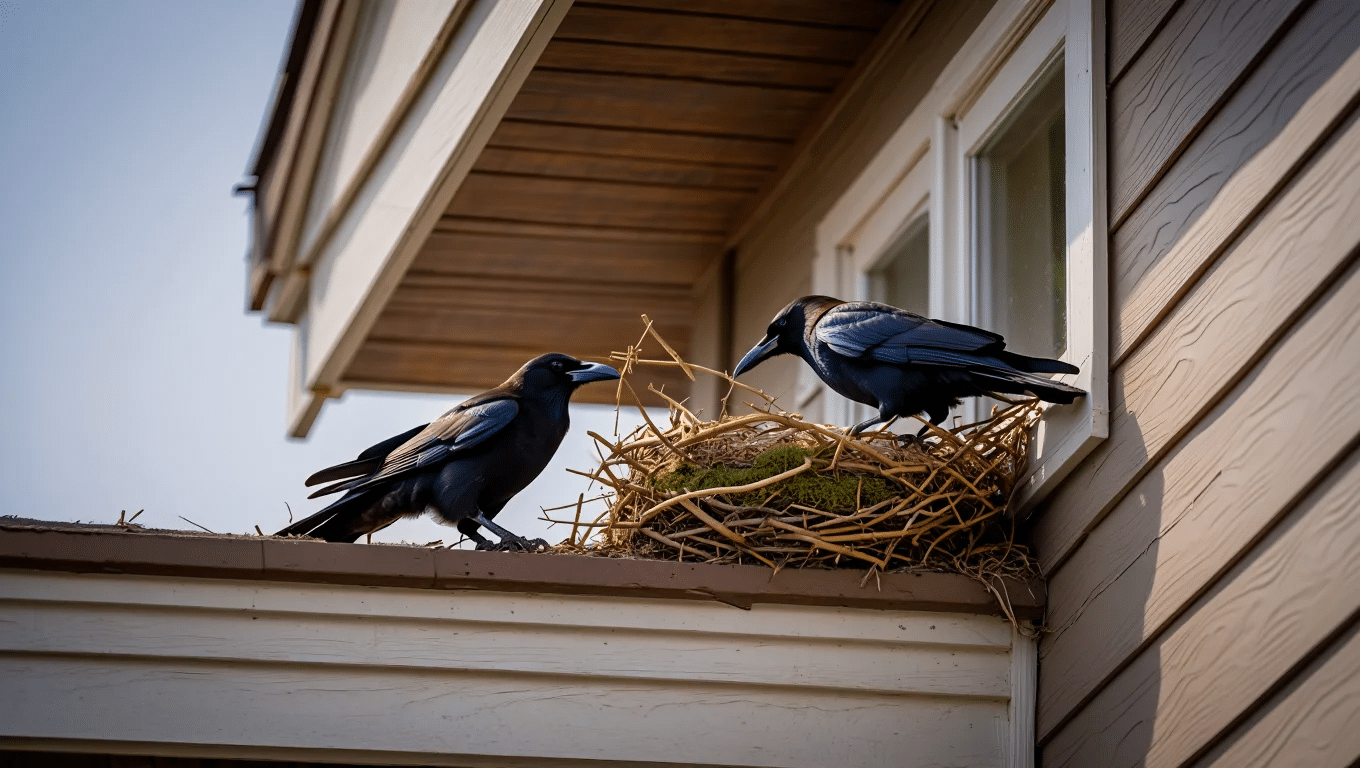
Why They’re Attracted:
Crows are smart and adaptable. They find plenty of food in cities and suburbs and like nesting in tall trees or on buildings.
Signs of Disruption:
- Scavenging through trash or gardens.
- Noisy calls, especially at dusk and dawn.
- Damage to crops or gardens.
Seagulls (e.g., Herring Gulls, Ring-billed Gulls)
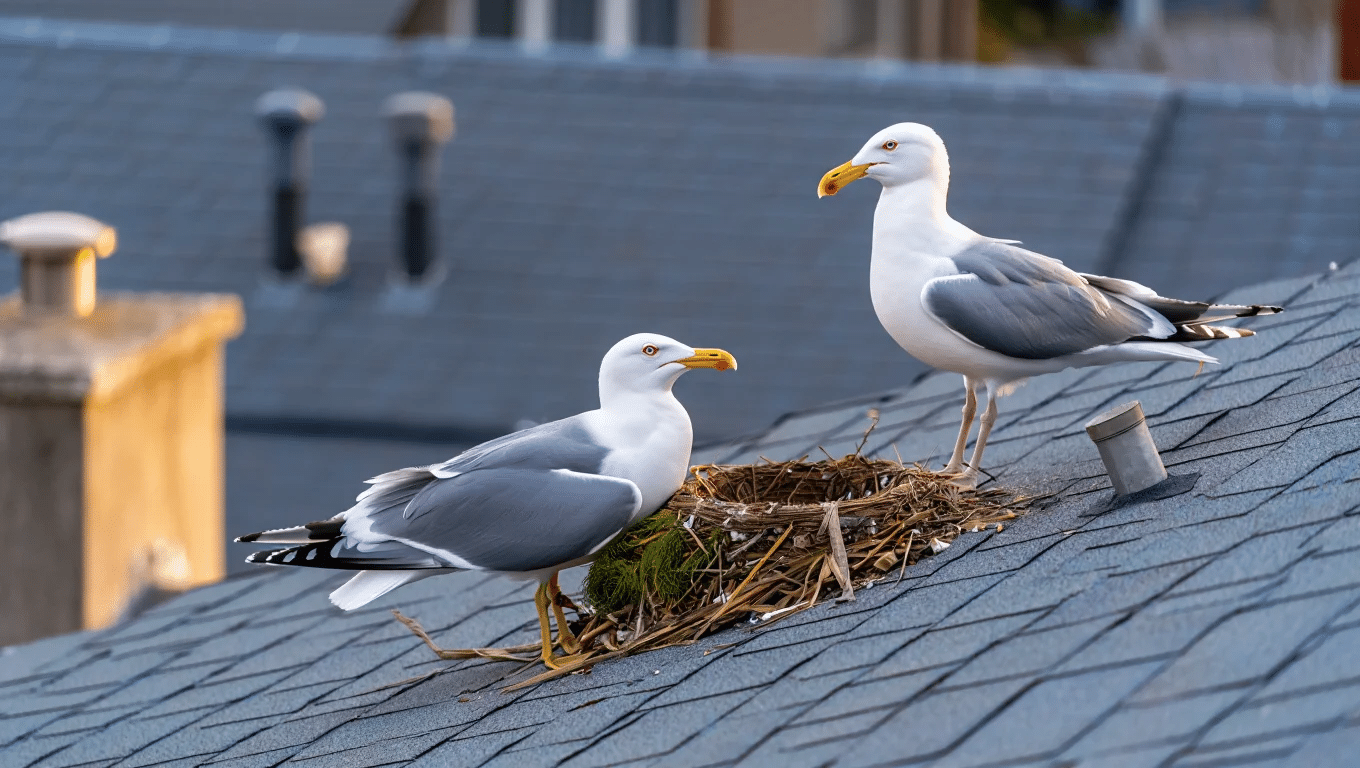
Why They’re Attracted:
Seagulls are attracted to urban and coastal areas, where there’s easy access to food and flat surfaces for nesting, like roofs and parking lots.
Signs of Disruption:
- Loud calls, especially during breeding season.
- Nests on rooftops or high ledges.
- Scavenging food from trash bins or outdoor eateries.
Final Thoughts
Stopping birds from nesting around your space doesn’t have to be a challenge.
With the right approach, like using physical barriers, eco-friendly deterrents, and even encouraging natural predators, you can protect your home and garden without causing harm.
Understanding the birds that are most likely to nest in your area and taking action early will make all the difference. Timing is key, and simple solutions like sealing entry points or offering alternative bird-friendly spaces can keep them away from your home.
By implementing a few thoughtful strategies, you can create a peaceful environment for both you and the birds.


